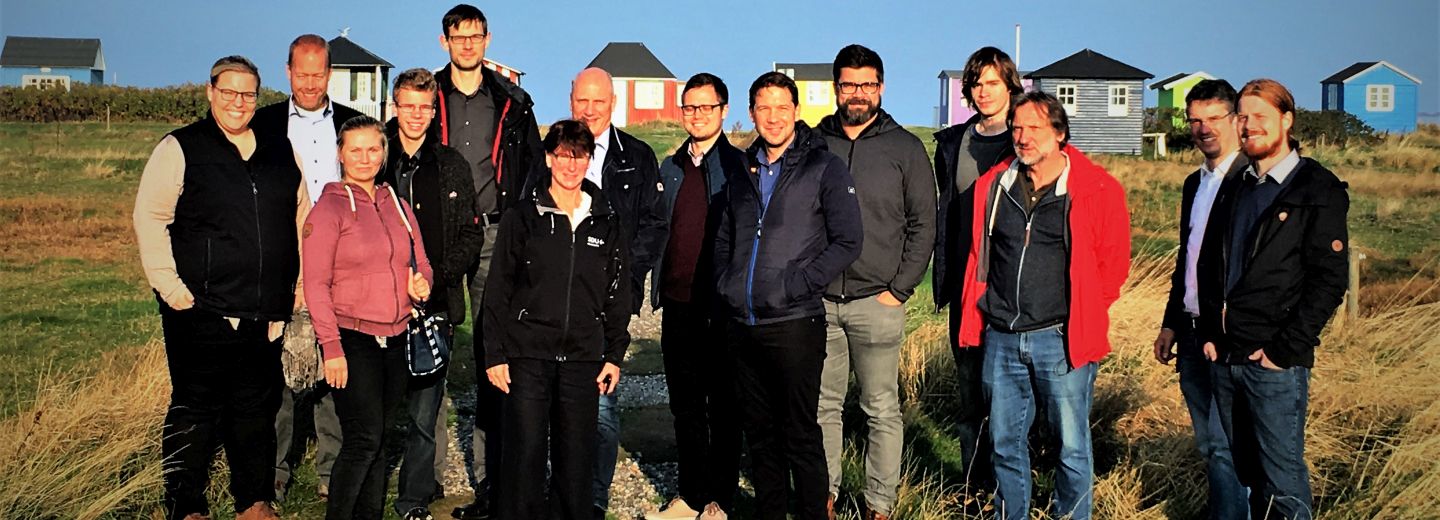
Ærø becomes a new network partner in SDU project – the green island is supposed to become even greener
The little gem in the southern Danish sea, Ærø, produces more power than the island itself consumes. Paradoxically, Ærø is nevertheless forced to export and import power because the consumption pattern of the inhabitants does not match the production of the six large wind turbines on the southwest coast of the island. This problem is now addressed by an Interreg project with SDU as lead partner.
We all know that it is best to buy locally. If the price is the same, we will always choose a nearby produced Gråsten apple from the local farm shop rather than an imported Pink Lady apple from Brazil. Foods from local producers have a shorter transport time and thus a lower CO2 footprint. The same goes for power. It is better to use local power - in addition to not being transported over long distances with the involved losses, you are also 100% sure that it is green if it comes from a wind turbine or a nearby solar power plant.
On Ærø, they have six large wind turbines which should cover the island's power needs, but that's not the case. The inhabitants of the idyllic island do not use the power when it is produced.
- Our consumption pattern is simple: We spend most of our energy during two hours in the morning and three hours in the afternoon. We have virtually no consumption at night. It would be optimal to store some of the energy produced by the wind turbines at night, where they often produce a lot of energy, and then use it later, says Jess Heinemann, coordinator for renewable energy, from the Technical Department at Ærø Municipality.
Clever power
And with this, a research project called CarpeDIEM should help. The project is a Danish-German research collaboration, where the last part of the name stands for Distributed Intelligent Energy Management. This means that the energy from local energy producers must be used locally by letting electrical devices (e.g. electric cars, electric buses, electric ferries, batteries, etc.) use an intelligent control system that coordinates and optimizes the charge time.
- In reality, we have a mismatch between production and consumption patterns when it comes to energy. It can be solved in two ways. Either by saving the energy using, for example, a large or several small batteries or by using what we call Low Shifting, says project manager Robert Brehm from SDU Sønderborg. The researcher further explains that a German village, Dörpum, has served as a test location in connection with the project.
- Together with cbb Software and Technische Hochschule Lübeck we have developed a charging controller that can not only control power consumption but also functions as a communication channel between electronic devices such as electric cars. The charging controller can adjust the current to suit the load. That's what we define as Low Shifting. At the same time, the data we have gathered shows what is needed to make this economically profitable.
Economic gain of green, intelligent energy
This is where we get to the core of the project. For the dream of so-called Smart Grids using digital communication technology to detect and respond to local changes in consumption has existed for a long time. Smart Grids must allow and support consumers to generate power. This can be done from solar cells on their own roof or from the car's charging station. The idea is that if you have power in surplus, you should be able to send your excess power into the intelligent network, which will then send the power to the place where others need it. The problem is just that it has not been a good business so far.
- Storing power is essential, as we see from our collected data, says Robert Brehm.
By this, one of the biggest challenges of the electricity network may end up being the solution to the problem.
- Electric cars will soon become part of our everyday lives. When people get home from work at 5 pm and let them charge, a huge peak load will arise, as our current grid is not yet equipped for this case. But if we look at electric cars like mobile batteries, they can actually become a resource instead of a load. It only requires intelligent control of the power.
Back to renewable energy coordinator Jess Heinemann from the Technical Department at Ærø Municipality. He sees great perspectives in collaborating with the carpeDIEM project.
- Any kind of battery technology and any kind of storage will be good for Ærø. As it is now, we send green power away when we have surplus, and then we buy electricity when we have a deficit. We actually do not know where the power comes from - it could theoretically come from a coal-fired power station in Germany.
Ærø municipality entered the carpeDIEM project as a network partner in early 2018 and has now become full partner in the extension application of the project. carpeDIEM is financed by Interreg Deutschland-Denmark with means from the European Regional Development Fund.